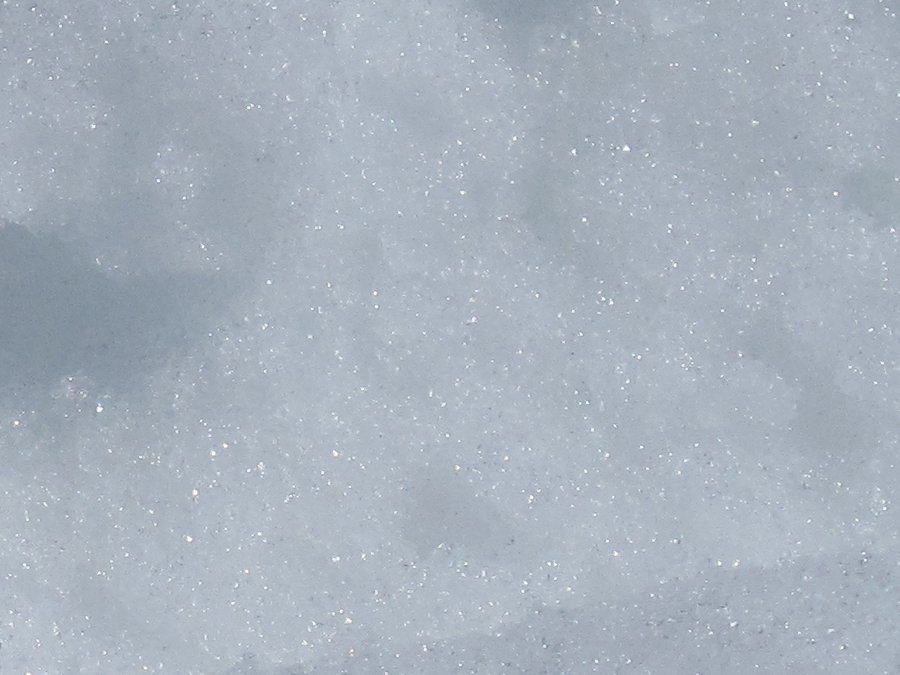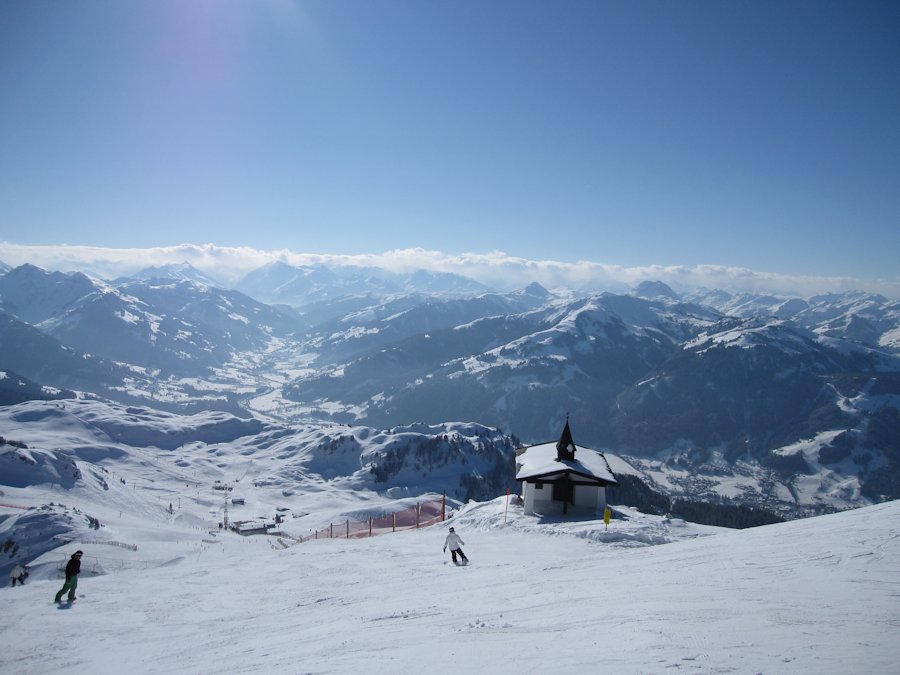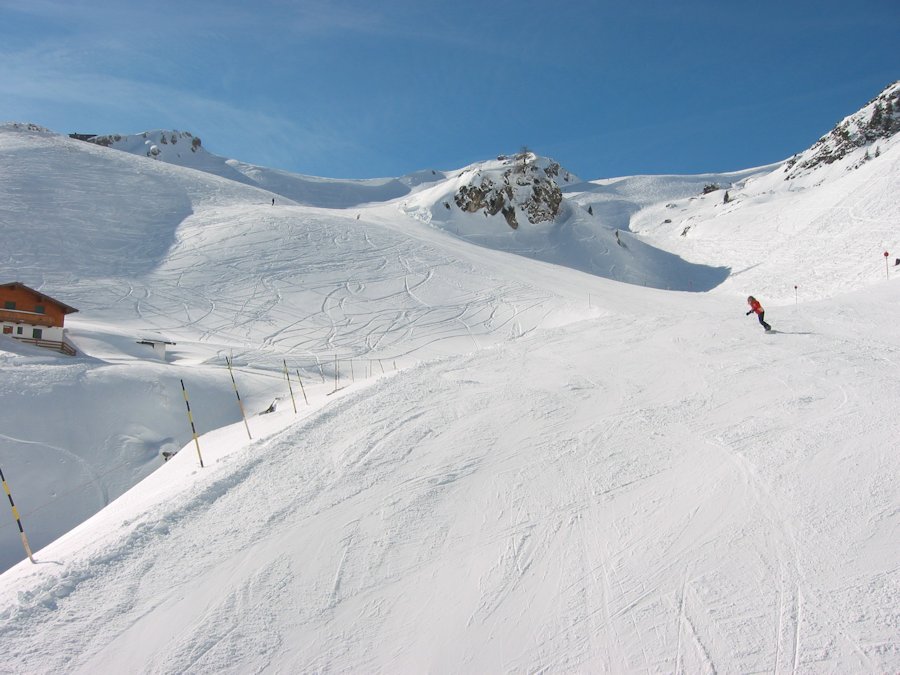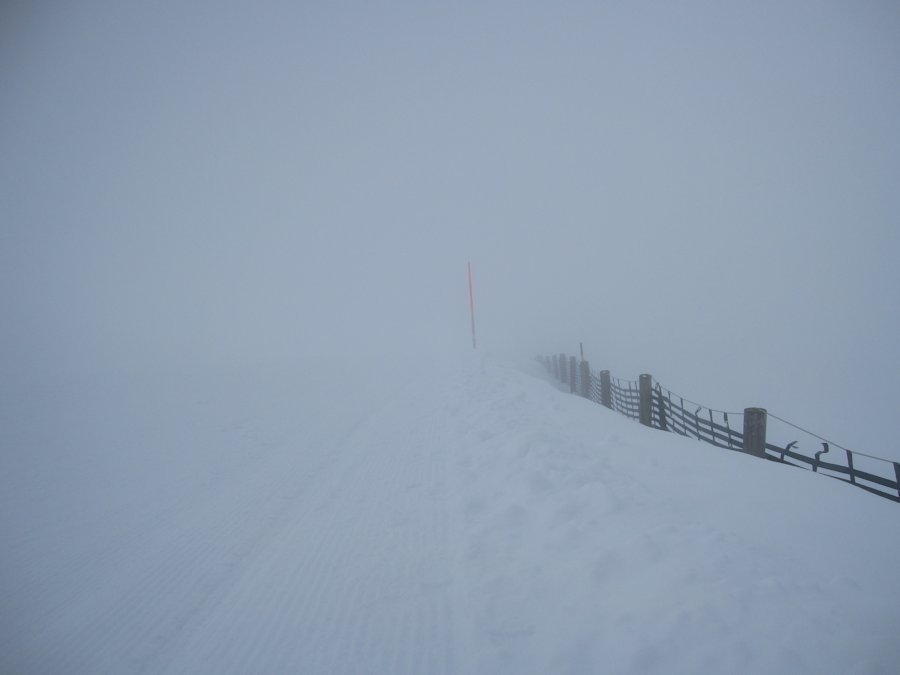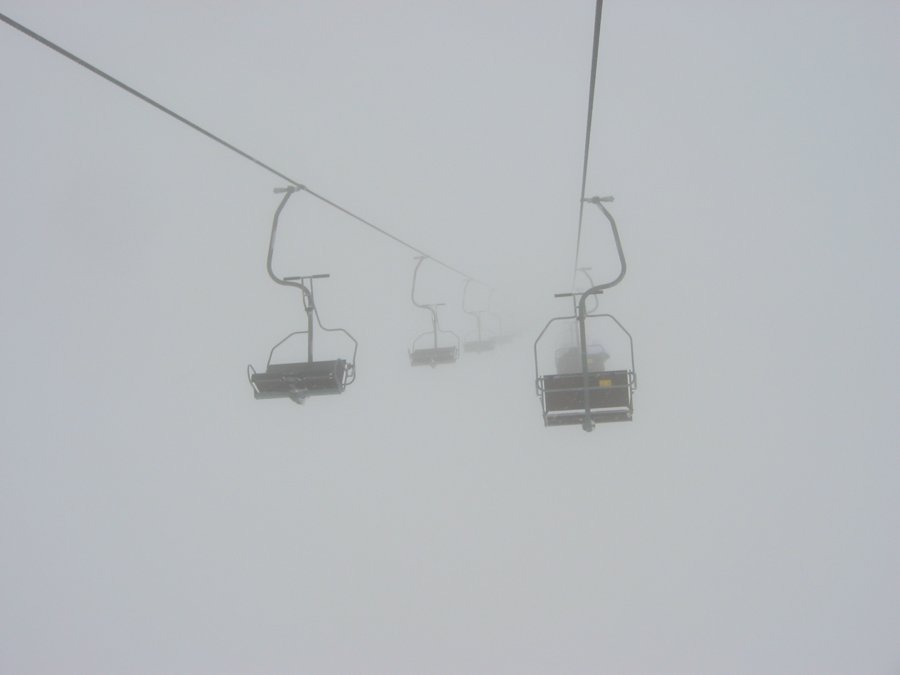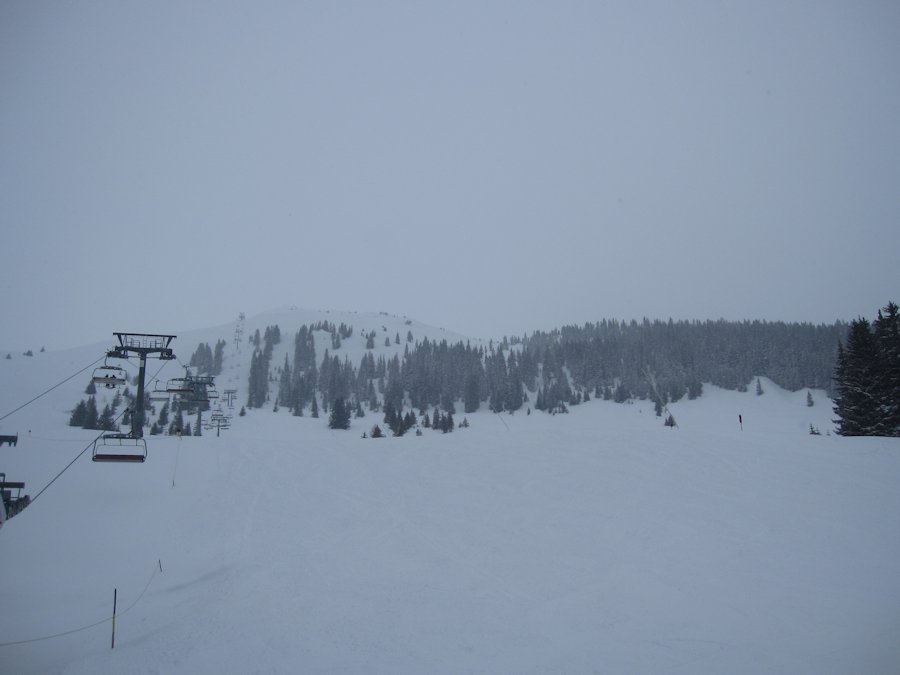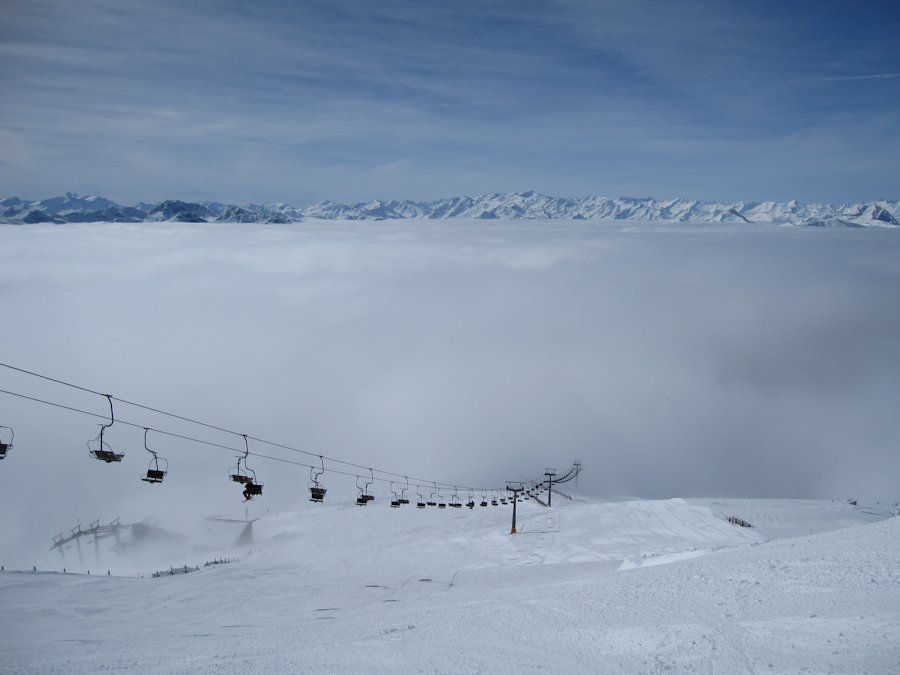SNOWBOARDING
Snow and Weather Conditions

Depending on how cold it is, warm it is, windy it is, when it snowed the last time, how much it snowed the last time, and many many more variables, there can be lots of different conditions on the mountain. Here is a brief introduction to some of them:
Snow Conditions
Icy Pistes
If it is cold and has not snowed for a while, the pistes will start to get quite icy, this is because skiers and snowboarders keep going over the same layer of snow compacting it more and more until it becomes very solid. Most skiers and boarders do not like ice as they can not dig their edges into it very well, and have very little control. However if the ice is all smooth, and there is plenty of room, ice can be a lot of fun, and the ultimate piste condition for speed skiing.
Soft Pistes
If it has snowed recently, even though the piste machines (piste bashers) will have compacted and flattened the snow, the snow will still be relatively soft. In these conditions the snow can be moved around a lot, and pistes can become very lumpy very quickly. This is when the moguls really start to be made. With the soft snow though the skis will normally have a lot of control as the edges can dig into the snow well, and it will also generally not hurt so much if you fall over.
Slushy Pistes
If it is too warm and the snow melts in the day, and then refreezes in the night, you will find that it is extremely icy in the morning, and as the day goes on the snow will start to melt, and become slushy. As the snow keeps melting and refreezing, all the snow flake structure is lost, and what is left is lots of little lumps of ice, so if you fall you will get ice burns on bare skin. Because there is no snow crystal structure in slush, slushy snow is very heavy, and can make the skis very hard to turn and move around. When the snow is wet, the water will also start to create a vacuum between the ski and the snow, sucking the ski to the snow so that it can not slide so easily. Slush is generally not a preferred snow condition, although it can still be fun. These conditions are more common at the end of a season in the spring.
Sticky Snow
When snow is wet it can start to create a vacuum under the ski which stops the skis from sliding so easily, as can happen with slush. The worst snow for this though is generally fresh snow that still has the snow crystal structure but which is melting rapidly and starting to become wet very quickly. Because of the fine wet structure of the snow it moulds itself to the bottom of the ski very tightly making it very hard for air to get underneath. This creates a vacuum that makes it very difficult for the ski to slide. Skiing in this kind of snow can be very frustrating as skis can simply not slide across slopes that they normally would, and even skiing down steeper slopes can feel like someone has put the brakes on.
Each of theses conditions can obviously be more or less extreme, and it is also possible to get a mixture of the conditions. For instance if there has been a fresh snowfall on an icy piste, the fresh snow can be pushed off the ice in places, leaving icy patches amongst a softer piste.
Weather Conditions
Sunny Weather
Sunny weather is generally the nicest weather to ski in as you can see where you are going easily, you can see the definition in the snow, with the bumps and changes in gradient easy to make out, and you can enjoy the views on the mountain. If it is a beautiful clear day and nice and sunny, it does not necessarily mean that it is going to be warm or even warmer though.
The sunny days can be some of the coldest, especially if it is the middle of winter. Fortunately as there will not be so much moisture in the air, you should retain your heat a bit better than in some other conditions. In general though, the sunny days are the warmer days and they can be extremely warm especially in the spring. Towards the end of the season it is even possible to go skiing in a tshirt it can be that warm, although you should be careful if you consider this as falling on bare skin can give you ice burns very easily.
Blizzard
A blizzard is the most dangerous condition on the mountain. It is when there is a strong wind and it is snowing heavily. In a blizzard you can not see very well, the snow and moisture in the air makes you lose heat quickly, and the wind just keeps throwing more snow and cold air at you, making you cold even more quickly. There are many different intensities that a blizzard can be, but if it is a stronger blizzard no-one in their right mind stays on the mountain, unless they really must i.e. they're stuck. Skiing in a severe blizzard is no fun for anyone.
White Out
A white out can be a blizzard or just a very misty day, and is basically where the weather stops you from seeing very far. In a bad white out you won't be able to see more that a few metres away from you. This can make navigating a slope extremely difficult, especially for someone who doesn't know the slope very well.
It can also be easy to go off the side of the piste without realising in places as you can not see where the edge is if there are no markers nearby. Again skiing isn't much fun if it's a really bad whiteout, as you just can't do much. Although very rare, some people are unlucky enough, to only have a white out for the whole of their holiday, and never get to see what the mountain actually looks like.
Flat Light
Flat light is where there is a thick layer of cloud in the sky, and the light bounces through the clouds so that it comes from all directions, creating no shadows on the snow. Since the snow is all white, you can not see any definition without shadows and different light intensities, this means that you can't see bumps, changes in gradient, or basically any shapes in the snow. When skiing in flat light it is advised to stay below the tree line if possible, as the trees give more definition to the snow, and act as features near the piste to use as references. Using the correct lenses in your goggles will also help a lot with seeing definition in the snow as explained in the goggles page. Skiing closer to the side of the piste can also help as you can use piste signs and other features as references. If you don't have much to help you determine what the piste does, it can be very hard skiing in flat light. It is hard to prepare for anything that comes up, as you don't know it's coming, sometimes you just have to hit it and hope you can recover. It can also be very hard to tell how fast you are going, you might think you are going really fast when you are barely moving, or think you are barely moving when you are actually really going some, you might not be able to tell. Also if you jump you can not always see when you are going to land, if that's the case you just have to try and be ready for it.
Changeable Conditions
It is very common for the weather conditions on the mountain to change during the day, or to even have several different weather conditions at the same time. This should not be underestimated as the weather can both change extremely quickly, and have two or more different extremes at the same time. In the picture here you can see how extreme sun turns into a complete white out as you go into the clouds. If the weather is likely to change at all it is very important to be prepared for it and have whatever extra equipment and clothing you would need with you.
Sunburn
Please also be aware that it is also very easy to get sun burnt on a mountain. The sunlight reflects off of the snow and gives you a lot more exposure to the sun than you might realise. Adding this to the fact that you are high up on a mountain and there is less atmosphere to stop the suns rays before they get to you as well, you must be careful. Even in conditions where you can't even see the sun properly it can still be very easy to get sun burnt.
Although many people love different types of conditions, almost all prefer it to be reasonably sunny with good light. The people who prefer bad light will generally be the people who want the snow to themselves, and prefer that over being able to see properly.
